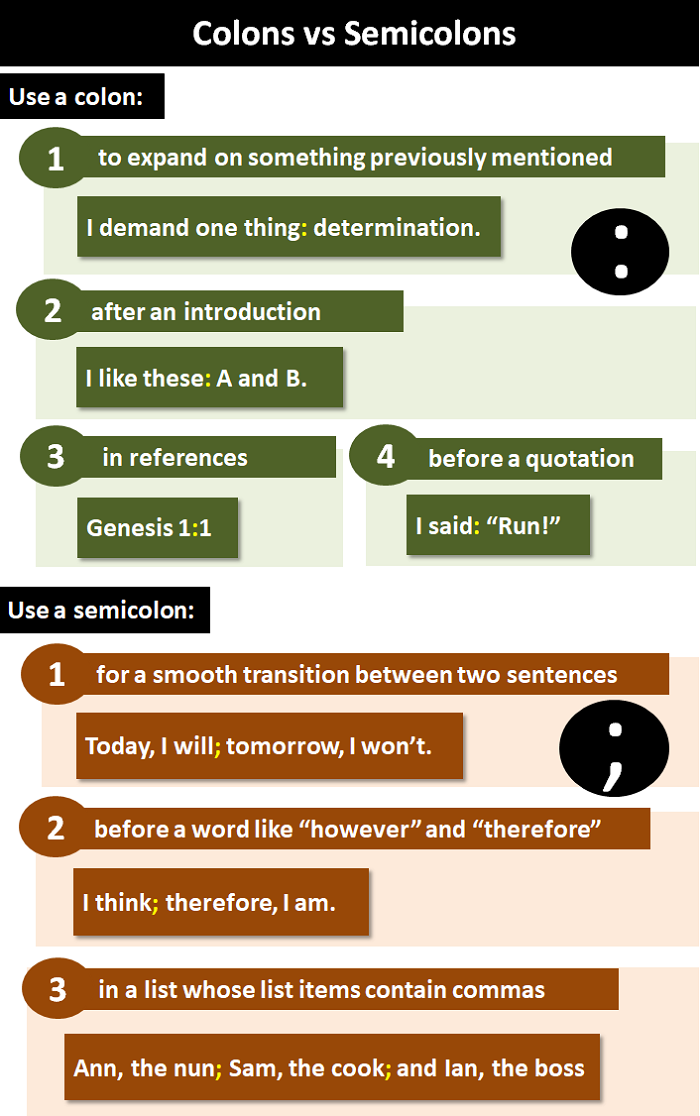Colons are punctuation marks that can be used in various ways in writing. They are often used to introduce a list, a quote, an explanation, or a conclusion. Understanding how to use colons correctly can enhance the clarity and flow of your writing.
When used properly, colons can help to connect ideas and provide emphasis. Here are some examples of how colons can be used in grammar:
Colon Grammar Examples
1. Lists: Colons can be used to introduce a list of items. For example, “There are three things I love: chocolate, pizza, and ice cream.”
2. Introducing a Quote: Colons can be used to introduce a quote or a piece of dialogue. For example, “He shouted one word: Run!”
3. Explanation: Colons can be used to introduce an explanation or clarification. For example, “The answer is simple: practice makes perfect.”
4. Time: Colons can be used to separate hours and minutes in time. For example, “The meeting is at 9:00 AM.”
5. Titles: Colons can be used in titles to separate the main title from a subtitle. For example, “The Art of War: Strategies for Success.”
Overall, colons can be a useful tool in writing when used correctly. They can help to add clarity, emphasis, and structure to your sentences. Remember to use colons sparingly and only when necessary for the best effect.
Next time you are writing, consider incorporating colons to enhance your grammar and make your writing more engaging.
